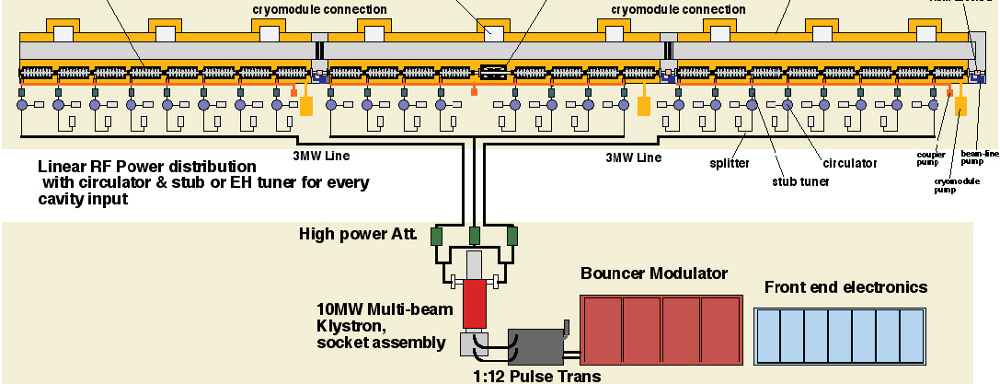Director's Corner
9 September 2010
 Barry Barish |
Developing an ILC Project Implementation Plan
The Global Design Effort was formed to coordinate the international R&D efforts and to develop and evolve a global ILC design. The present phase of our work is focused on the key R&D projects needed to establish the reality of building an ILC and the design work is aimed at evolving the design documented in our Reference Design Report so as to be optimised for cost, risk and performance. We have established a plan for this programme that will result in a Technical Design Report by the end of 2012 that can be the basis of government decisions on the project and be the basis for developing site specific and project specific designs as the next step. Another important step is to develop a Project Implementation Plan (PIP) as a way to outline the options, models and plans for realising the ILC as a project.
Our intent is to share our the different sections of the PIP as it develops to both our scientific oversight committee (International Linear Collider Steering Committee – ILCSC) and our resource oversight committee (Funding Agencies for Large Colliders – FALC) with a complete report available at the same time as the ILC Technical Design Report in 2012. So far, the area we have been studying in the most detail is governance, and Brian Foster reported to FALC on Governance at their June meeting, to ILCSC in July, and more publicly at the Paris ICHEP meeting. A written report will be available soon and Brian Foster plans to concentrate on this subject in his guest Director's Corner next month. We have reviewed most major international physics and astronomy projects for lessons learned and we present some provisional conclusions regarding governance for the ILC.
 Mike Harrison shown during the Global Design Effort Executive Committee meeting in Paris is leading the effort to develop a Project Implementation Plan Mike Harrison shown during the Global Design Effort Executive Committee meeting in Paris is leading the effort to develop a Project Implementation Plan |
Our broader effort towards a PIP is being led by Mike Harrison. In addition to including a section on governance, other topics will include in-kind contribution models, funding models, proposed host responsibilities, a project schedule, discussion of the remaining technical activities, technical and process aspects of site selection, industrialisation and proposed project management structures. We will not seek to propose member state contribution packages by 2012. Instead, we will seek to determine appropriate technical interfaces. This will de facto determine the integration activities expected from the construction project and those which would be internal to the member state contributions.
As the PIP develops, I will discuss aspects of it in this column, but today let me just comment on the areas of site development and host responsibilities.
The GDE will provide the major site requirements such as footprint, i.e. the size and general shape of the machine, power needs, tunnel penetrations and so on. In addition, we will provide information on different technical solutions to enable different site topographies to be considered. Therefore, we expect the final ILC design to be site dependent to some degree and we are now in discussion as to how far we will go beyond a generic site-independent design. The actual site selection process is being specified by the ILCSC, although we do expect to include it in the PIP.
A related subject is what will be the host responsibilities for a global ILC project. There is presently consensus on much of this issue, including host responsibility for land acquisition and services to the site boundary, and we do not plan to include these in the project cost. Similarly, civil construction and on-site utilities, which is part of the construction project, we assume will be a host responsibility. We expect that host contributions beyond this would look more like a member state and be determined in a similar fashion. Of course, there are many issues that the host state must agree to, like international access and other international issues. We have been studying ITER, the International Thermonuclear Experimental Reactor, as an example for these kinds of issues.
Clearly, there are many interesting and challenging issues in putting together a successful international project, let alone one with the scale of the ILC. There is no one successful model to follow, so we must learn from what has been successful and what has been problematic in other large collaborative international science projects. One lesson that is apparent is that the more these kinds of issues are worked out in advance the better prepared we will be to "implement" the ILC successfully.
-- Barry Barish

